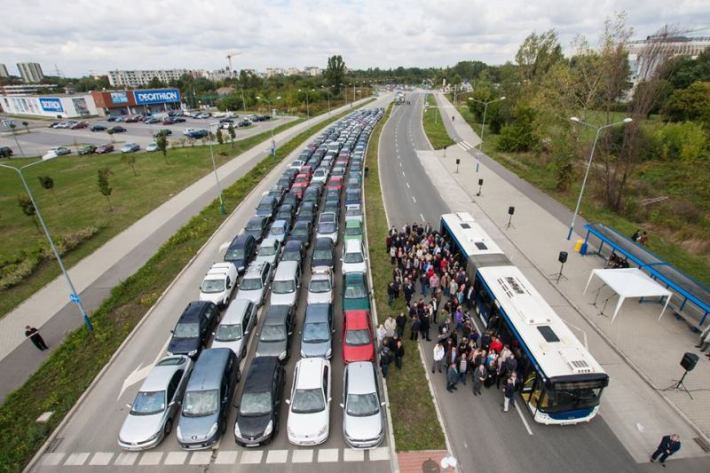Note: GJEL Accident Attorneys regularly sponsors coverage on Streetsblog San Francisco and Streetsblog California. Unless noted in the story, GJEL Accident Attorneys is not consulted for the content or editorial direction of the sponsored content.
A conversation has started again about giving some dedicated space on the Bay Bridge back to transit. It began, reportedly, after Alameda County Assemblymember Rob Bonta asked for ideas towards formulating "Green New Deal" legislation for the state.
HOV lane in Oakland on 580 towards the Bay Bridge. The @rideact buses are always stuck in traffic from Oakland to bridge. A bus only lane would be better but I'll take an HOV lane!
— me (@ecosmiley) January 4, 2020
Supervisor Matt Haney is behind the idea too.
In 1958, transportation planners made a mistake of such galactic stupidity it's almost beyond comprehension: they removed rapid transit from the Oakland Bay Bridge, as part of a regional act of civic vandalism that destroyed the once-great Key System rail network in the East Bay.
The San Francisco Chronicle's Rachel Swan, in her piece over the weekend, writes that making transit-only lanes on the bridge again won't be simple.
Perhaps that depends on what's meant by "simple." If it's a moral question, it comes down to this: do Caltrans officials who control the bridge think a human being in a private car is worth 80 times more than a person on a bus? If that's the case, then buses should continue to wait with lines of cars. Otherwise, clearly buses should get their own lanes, 24-7, 365 days a year.

And, logistically, yeah, it's simple too.
Making bus only ramps and giving buses open clearance on and off the bridge would be a little complicated, but much of that work has been done already--there are already bus-only ramps into and out of the new Transbay Terminal. So it's really just a question of adding signs, paint, and dividers for transit lanes. Some are talking about an older proposal that had a contraflow bus-only lane, but that's motivated by a desire to, again, do the absolute minimum to perturb individuals in private cars. In reality, just taking a lane in each direction for buses--the moral way to do it--is simple as hell.
The politics? Yes, that's complicated. Politicians such as Bonta and Haney and others will have to weigh and deal with the blow-back they will receive from entitled motorists, which, if badly handled, could get them drummed out of office. Because traffic on the Bay Bridge will get worse (if that's possible?) at least in the short run. Eventually, people who can take the bus but currently drive will start to see the bus as a faster alternative. If the myriad of studies into induced demand are any indication, in the long run traffic speeds are unlikely to change.
However, new and future bus riders will have a much faster, more reliable alternative. And it will relieve some of the strain on BART.
Destroying the Key System and removing rail from the Oakland Bay Bridge was one of the most sinister public-policy decision in the history of the Bay Area. But it would be an equally bad choice to pretend we're forever stuck with it. Once buses have their own lanes on the bridge, the region can talk seriously about bringing back rail on the bridge as well. After all, many of the old Key System routes in the East Bay are still there--converted to greenways, traffic lanes, or parking. Priority should be on re-establishing routes on surviving ROWs in areas not served by BART.
But let's not be deluded: creating transit-only lanes on the bridge is a simple choice, except for morally addled officials who think bus riders are less than fully human.






